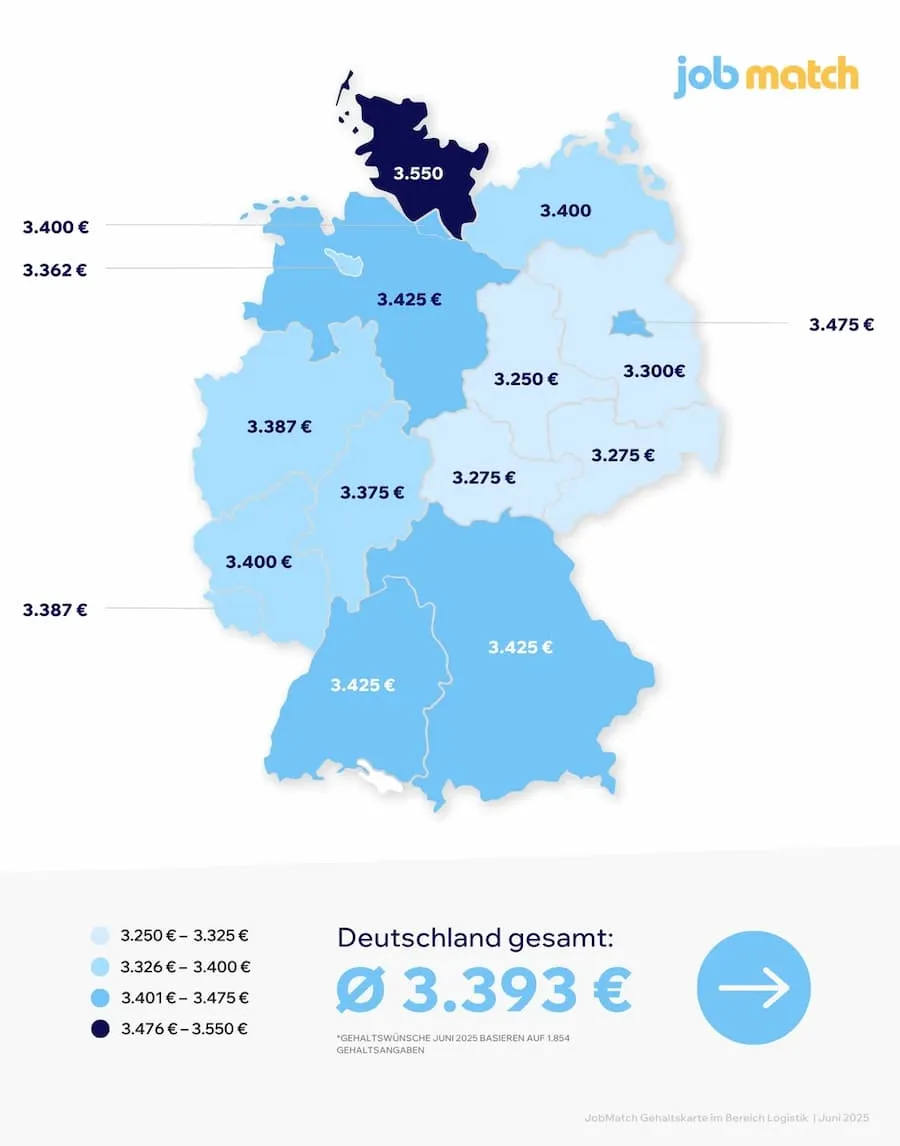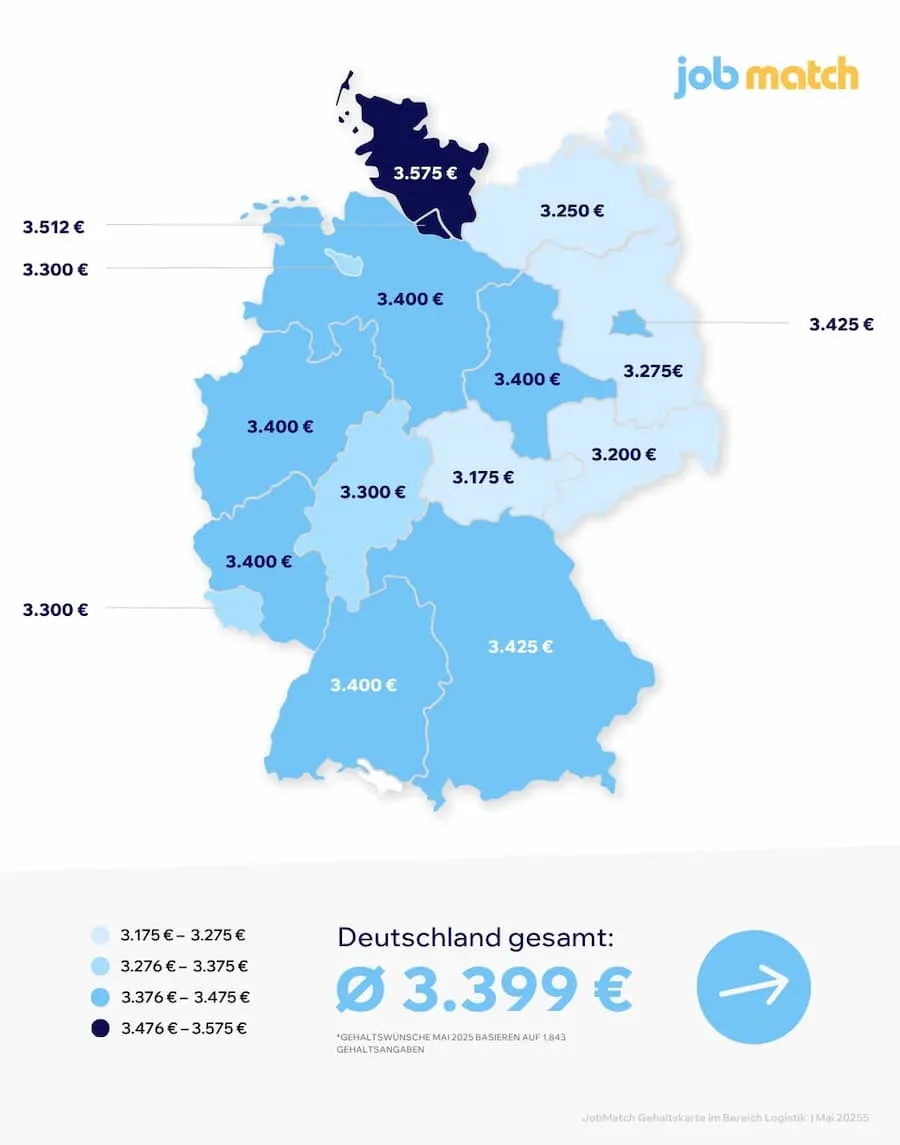Despite a slight drop, salary expectations among truck drivers in Germany remain notably high. The latest data from JobMatch shows that regional differences are still pronounced – and these cannot be explained by cost of living alone. The findings provide valuable insight for logistics companies aiming to retain staff or recruit new drivers.
According to JobMatch’s May 2025 wage map, the average gross monthly salary expectation among professional drivers rose to €3,399. In April, the figure stood at €3,357 – a rise of around 1.25% within a month. In June, a slight decline followed, bringing the average down to €3,393. Expectations therefore remain high but show initial signs of stabilisation.

In June, the data was based on 1,854 salary entries; in May, the figure was 1,843. Both datasets provide a detailed breakdown by federal state.
Where drivers are asking for more – and where less
In May 2025, Schleswig-Holstein recorded the highest salary expectations nationwide, at €3,575, followed by Bremen (€3,512) and the southern and western regions of Germany, where pay expectations remained stable at around €3,400. In June, Schleswig-Holstein again topped the list with €3,550, while both Hamburg and Mecklenburg-Vorpommern reported expected salaries of €3,400.
At the lower end of the scale in May were Thuringia (€3,175) and Saxony-Anhalt (€3,200). In June, Saxony (€3,250), Saxony-Anhalt and Thuringia (both €3,275) continued to rank among the regions with the lowest pay expectations.
Berlin, on the other hand, stands out in eastern Germany – with an average of €3,475 in June, well above the regional norm.

In case you missed it: Denmark eases cabotage rules: greater flexibility for unladen transport
What explains the differences?
Besides cost of living, several structural factors also contribute to regional variation: labour shortages, demand for transport services, the presence (or absence) of collective agreements, company size, and the required qualifications or additional responsibilities – such as transporting hazardous goods or driving international routes.
JobMatch’s May analysis pointed out that companies still relying on outdated pay structures are increasingly falling behind. A competitive salary is no longer optional – it is essential.
What else are drivers looking for?
In addition to pay, the May data shows that other factors are increasingly important when choosing an employer:
- modern vehicles,
- predictable working hours,
- transparent, open communication,
- additional pay for night and weekend shifts, and
- respectful, professional treatment at eye level.
As stated in a previous JobMatch report from spring:
“High salary expectations are only part of the picture. Drivers are placing growing value on fixed routes, regular home time, and opportunities for further training – such as obtaining an ADR licence or developing digital skills.”









